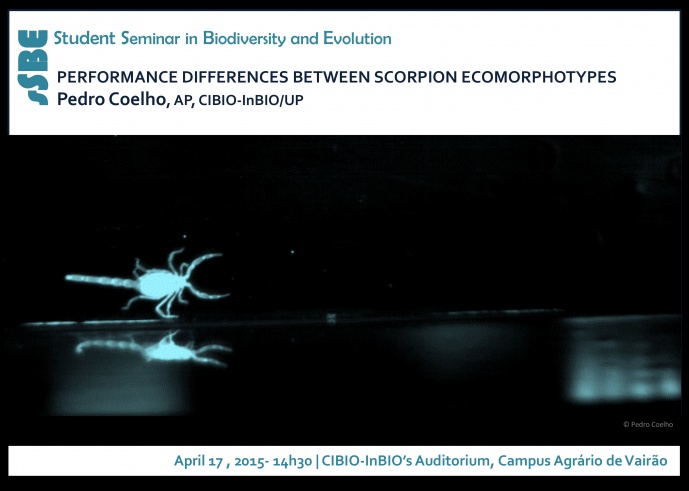PERFORMANCE DIFFERENCES BETWEEN SCORPION ECOMORPHOTYPES

STUDENT SEMINAR IN BIODIVERSITY AND EVOLUTION

Scorpions occur all over the world (except for Antarctica) and have diversified into several environments and ecological niches. This is reflected in different combinations of morphological adaptations, called ecomorphotypes: some are specialized burrow dwellers, whereas others are vagrant, saxicolous and even arboreal. The morphological differences between ecomorphotypes are thought to convey differences in the performance of ecologically relevant tasks, but even in other animals this has rarely been quantified. Movement is intimately associated with ecology as a way organisms perform vital activities. In my PhD I will study motion in three components: tail strike, substrate interaction and locomotion (gait). Understanding the evolution of ecomorphotypes, and their relation to environments, can give the first insights into the evolutionary options and restrictions of the versatile scorpion body plan.
Pedro Coelho is a first year PhD student under the Doctoral Program “Biodiversity, Genetics and Evolution” at the University of Porto and a member of the Applied Phylogenetics (AP) group in CIBIO-InBIO. Pedro Coelho is supervised by Dr. Arie van der Meijden (CIBIO-InBIO), Dr. Walter Federle (University of Cambridge, England) and Dr. Anthony Herrel (CNRS, Paris, France) with a thesis project entitled “Performance differences between scorpion ecomorphotypes”.
Image credits: Pedro Coelho